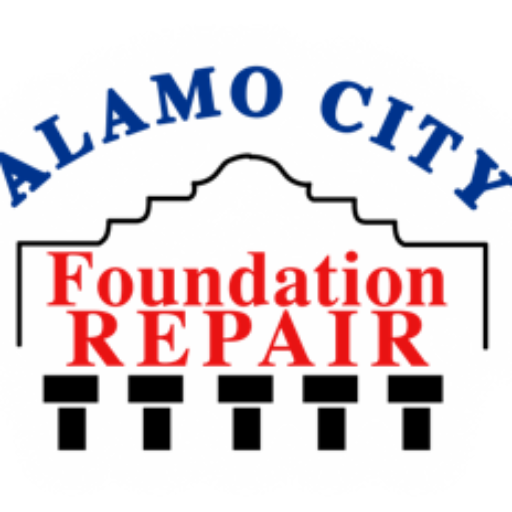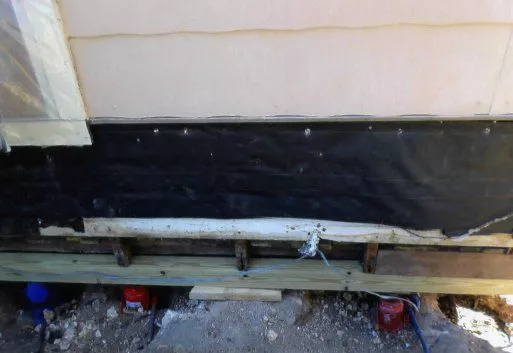How Soil Causes Foundation Cracks in San Antonio
Foundation cracks can appear in any home due to the surrounding clay soil in certain areas of San Antonio. You may notice the signs of foundation problems in your home, including sticking windows and doors that don’t open or close right, bowing or buckling walls, uneven floors, and even cracks in the foundation itself. At Alamo City Foundation Repair Foundation Solutions, we offer quality San Antonio Texas foundation repair services that can repair the damage caused by weak or expanding soils or hydrostatic pressure, which is the force that water exerts as it presses into your foundation walls.
During the construction process of building a home, the foundation is dug out and concrete is poured. The soil that has been removed is then replaced as backfill, which can weaken the soil and possibly lead to foundation problems. When you notice foundation problems, the soils surrounding your home may be the problem. Alamo City Foundation Repair provides free inspections to identify the soil issues Around your house, beginning with knowing the type of soil your home is built on, and coming up with a plan to prevent further issues with your foundation.
Your Foundation and Different Soil Types
Understanding the types of soil under your foundation is the key to understanding foundation repair problems. The type of soil your home is built on is a key factor in the risk of foundation damage you have. Sand and sandy loam soils allow water to pass through, making them more stable and less likely to expand and cause foundation problems. But also, clay soils absorb water, expand, and put pressure on the foundation. This pressure can lead to floor cracks, wall cracks, and other foundation problems. Clay soil is very common in the Northeast parts of the San Antonio area including the following cities: Cibolo, Selma, Schertz, Universal City, Converse, Kirby, Live Oak Texas. The neighborhoods in these areas are built on expansive clay soil that creates a bad situation for concrete slabs and pier & beam foundations alike.
There are several layers of soil under your foundation, including bedrock, untouched soils, and what foundation professionals call an active zone, which is where foundation problems can happen. An active soil zone is the area that is affected by moisture and weather changes, causing soil to expand and contract. These soil movements can severely impact your foundation, causing bowing walls, wall and floor cracks, and poor stability. Depending on where you live, the active zone can be a few feet below grade or as far as 30 feet below the surface. Our foundation repair services can solve a wide variety of foundation soil problems.
Soils That Expand and Contract
When your foundation is dug out, the removed soil is backfilled into the empty space once the foundation is poured. Backfill behaves differently than undisturbed soil because it no longer has the tightly packed, watertight properties that undisturbed soil develops over decades and decades. When excess moisture enters any backfilled soil, it expands and puts pressure on your foundation walls. This is known as hydrostatic pressure, and it can cause serious damage to your foundation walls.
Foundation walls that are subject to pressure from expansive soils will bow inwards and develop cracks. If too much pressure builds up over time, the foundation walls could eventually fail. We can repair this problem with our wall anchor system which will stabilize the wall by tying it to stronger soils and preventing inward movement.
Settling Foundations
The soil under your foundation is made up of several different layers, some of which were disturbed when your foundation was originally dug out. When one of these layers can’t support the weight of your foundation, it will begin to sink and settle. This is even more previlant with clay soils on the NE parts of San Antonio. This is a slow process that will not be immediately obvious, but over time it can have serious effects on your home.
Common signs of a settling foundation include floor cracks, stair-step cracks in walls, cracks in interior drywall especially by the ceiling and around windows or doors, and windows and doors that are difficult to open and close. Foundations usually settle unevenly, causing damage to walls and floors that can eventually lead to failure if not addressed.
A Heaving Foundation happens when soils under your home expand and force the foundation upwards. This process is generally caused by too much moisture in your soil. Underground water, prolonged or heavy precipitation, poor drainage can all be causes of a heaving foundation. Foundation heave will indeed cause cracks in floors, bowing walls, and sticking windows and doors – all bad signs.
It’s important to know that although the symptoms of a heaving foundation and foundation settlement are very similar, the causes are very different and the solution for one won’t work for the other. One easy way to spot a heaving foundation is to examine floor cracks and see if they form an enclosed loop. The area inside that loop is where the greatest pressure is being exerted. In order to fix a heaving foundation, Alamo City Foundation Repair uses solutions such as improved drainage, soil stabilization techniques, and mechanical foundation repair with piers.
When you spot possible foundation problems, act immediately! Alamo City Foundation Repair can identify an eliminate any foundation problems at very affordable prices. Call us today.

